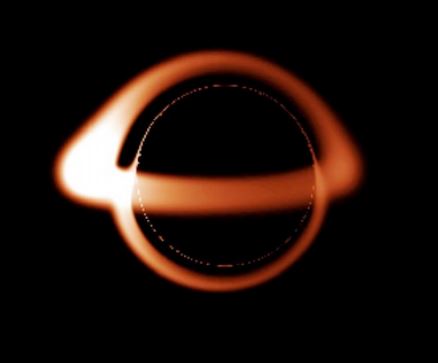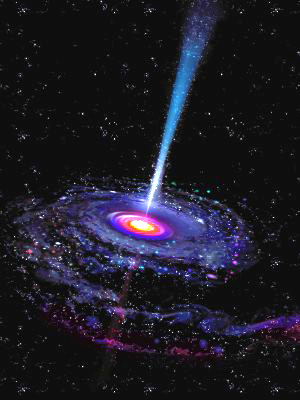

| Online: | |
| Visits: | |
| Stories: |

| Story Views | |
| Now: | |
| Last Hour: | |
| Last 24 Hours: | |
| Total: | |
A Look Beyond The Black Hole Event Horizon
Black holes are still very mysterious celestial bodies which, according to the majority of physicists, do not, however, escape the laws of thermodynamics. As a result, these physical systems possess an entropy though no real agreement has been reached about the microscopic origin of this propriety and how it should be calculatedIn principle, nothing that enters a black hole can leave the black hole. This has considerably complicated the study of these mysterious bodies on which generations of physicists have debated ever since 1916, the year their existence was hypothesized as a direct consequence of Einstein’s Theory of Relativity.
There is, however, some consensus in the scientific community on the fact that black holes possess an entropy, because their existence would otherwise violate the second law of thermodynamics.
 Credit: SISSA/Brandon Defrise Carter
Credit: SISSA/Brandon Defrise Carter
As we cannot see beyond the event horizon (the outer boundary of the back hole), the internal microstates that define its entropy are inaccessible: so how is it possible to calculate this measure? The theoretical approach adopted by Hawking and Bekenstein is semiclassical (a sort of hybrid between classical physics and quantum mechanics) and introduces the possibility (or necessity) of adopting a quantum gravity approach in these studies, in order to obtain a more fundamental comprehension of the physics of black holes.
Planck’s length is the (tiny) dimension at which space-time stops being continuous as we see it, and takes on a discrete graininess made up of quanta, the “atoms” of space-time. The Universe at this dimension is described by quantum mechanics. Quantum gravity is the field of enquiry that investigates gravity in the framework of quantum mechanics: this force is a phenomenon that has been very well described within classical physics, but it is unclear how it behaves at the Planck scale.
Daniele Pranzetti and colleagues, in a new study published in Physical Review Letters, present an important result obtained by applying a second quantization formulation of Loop Quantum Gravity (LQG) formalism. LQG is a theoretical approach within the problem of quantum gravity, and Group Field Theory is the “language” through which the theory is applied in this work.
“The idea at the basis of our study is that homogenous classical geometries emerge from a condensate of quanta of space introduced in LQG in order to describe quantum geometries” explains Pranzetti. “This way, we obtained a description of black hole quantum states, suitable to describe also ‘continuum’ physics, that is, the physics of space-time as we know it”.
Condensates, quantum fluids and the universe as a hologram
A “condensate” is a collection of ‘atoms’ – in this case space quanta – all of which share the same properties so that, even though there are huge numbers of them, we can nonetheless study their collective behavior simply, by referring to the microscopic properties of the individual particle. So now the analogy with classical thermodynamics seems clearer: just as fluids at our scale appear as continuous materials despite their consisting of a huge number of atoms, similarly, in quantum gravity, the fundamental constituent atoms of space form a sort of fluid, that is, continuous space-time. A continuous and homogenous geometry (like that of a spherically symmetric black hole) can, as Pranzetti and colleagues suggest, be described as a condensate, which facilitates the underlying mathematical calculations, keeping in account an a priori infinite number of degrees of freedom .
“We were therefore able to use a more complete and richer model compared with what done in the past in LQG, and obtain a far more realistic and robust result”, continues Pranzetti. “This allowed us to resolve several ambiguities afflicting previous calculations due to the comparison of these simplified LQG models with the results of semiclassical analysis, as carried out by Hawking and Bekenstein”.
Contacts and sources:
Federica Sgorbissa
International School Of Advanced Studies (SISSA)
Link to the original paper in Physical Review Letters: https://journals.aps.org/prl/abstract/10.1103/PhysRevLett.116.211301
Source:



